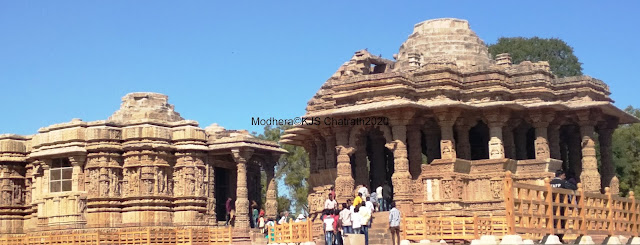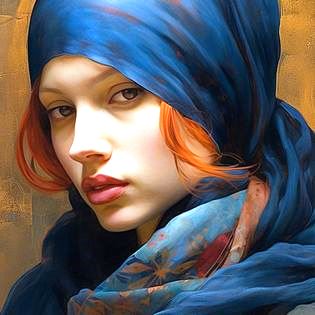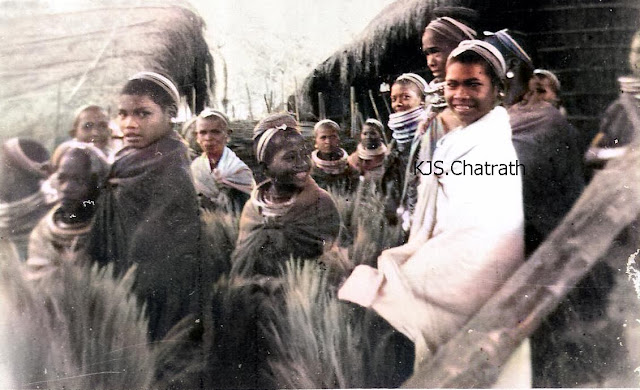'Modhera Sun Temple & Ramakunda (11th century A.D.), Gujarat, India. Part-I' - by K. J. S. Chatrath
I visited the Modhera Sun Temple and Ramakunda in Gujarat in January 2020 and noted how our ancestors fully understood the need of conserving water and took meaningful action over a thousand years back.........
The Sun Temple of
Modhera
The Sun Temple of
Modhera which ranks next to the Sun Temple at Konarak Is one of the finest
examples of temple architecture of Gujarat. Built in 11th century
AD, this temple is located in Bechraji
taluka of Mehsana District on
the left bank of the river Pushpavati, a tributary of river Rupan situated at a
distance of 30 kms from Patan city.
In front of torana is a
large rectangular tank, of 175 X 120 feet decorated with numerous miniature
shrines, which is locally known as Ramakunda. It is situated to the east of the
sabha-mandapa. This is approached through a grand flight of steps from four
sides. The tank has about 108 small temples which contain the relief of various
deities like Ganesha, Sheshashayal Vishnu, Nataraja and Sitala Mata.
It is built on a
platform (jagati) facing east, in the rule of Solanki ruler Bhimadeva-I (1022
-1063 A.D.). This place finds mention in the Skanda Purana as Bhaskar region.
The temple complex is an assimilation of three separate elements i.e. a Sanctum
(garbh-ghriha) with an ambulatory (pradarshina-path), a main hall (Gudha
Manadama and a detached Assembly Hall (Sabha Mandapa or Nritya Mandapa) with a
gateway (Torana).
The Sanctum has an
arrangement of elegantly decorated tall pillars with ornamental torana arch.
The outer walls of the sanctum are relieved by niches containing the images of
twelve adityas, panels of ashtha dikpalas, different forms of Gauri dancing
Apsaras, musicians, etc.
The pillared octagonal assembly hall has entrance arches exquisitely carved sculptures on the upper portion of pillar from all sides. While the outer walls are exquisitely carved with the images of various forms of gods, the inner walls are decorated with sculptures and scenes depicted from Ramayana and Mahabharata. The top (shikhara) of the assembly hall exists partially with miniature shikhara.
The pillared octagonal assembly hall has entrance arches exquisitely carved sculptures on the upper portion of pillar from all sides. While the outer walls are exquisitely carved with the images of various forms of gods, the inner walls are decorated with sculptures and scenes depicted from Ramayana and Mahabharata. The top (shikhara) of the assembly hall exists partially with miniature shikhara.
After the assembly hall
is the main hall and the sanctum where 12 images of Sun God are depicted. There
is a division (antarala) between the main hall and the sanctum. The temple is
devoid of the sculpture of the main deity, i.e., the Sun God. It is engraved
with sculptures of Brahma, Sheshashayi
Vishnu (man-lion incarnation)etc., some of the sculptures represent saiva
cult and Uma-Maheshwara, dancing
Ganesha and image of goddess Durga Saptmatrika
etc.
The outer walls of the
temple are relieved by the images of various gods and goddesses, panels of astadikpalas placed in cardinal directions, dancing Apsaras,musicians and amorous figures.
(Text source; Information boards at the site.).










Comments
Post a Comment